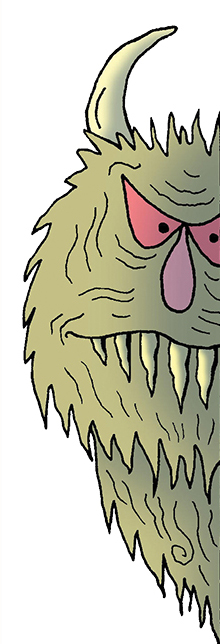昨日エントリの冒頭で触れたIMFブログ記事は「U.S. Monetary Policy: Avoiding Dark Corners」と題されており、その元となっている論文は「Avoiding Dark Corners : A Robust Monetary Policy」と題されている。ここで「dark corner」はブランシャールの昨年9月の論説で用いられた語であり、同論説では以下のように説明されている。

We all knew that there were “dark corners”—situations in which the economy could badly malfunction. But we thought we were far away from those corners, and could for the most part ignore them. Japan sat unhappily in that picture, an advanced economy stuck in a long slump with deflation. But its situation was often interpreted as the result of misguided policies rather than a harder-to-solve problem.
The main lesson of the crisis is that we were much closer to those dark corners than we thought—and the corners were even darker than we had thought too.
(拙訳)
我々は皆、「暗隅*1」――経済が非常な機能不全に陥るような状況――が存在することを知っている。しかし我々は、自分たちはそうした暗隅から遠く離れており、概ね無視できると考えた。日本はデフレを伴う長期の不景気に嵌った先進国経済であり、その構図に当てはまらなかったが、大抵の場合、日本の状況は誤った政策の帰結であり、解決が難しい問題のせいではない、と捉えられていた。
危機の主たる教訓は、我々は思ったより暗隅にかなり近いところにいる、ということであった。また、暗隅は思ったよりもさらに暗いところでもあった。
以下は、今回のIMFブログ記事からの引用。
The paper finds that—under conditions of still recovering demand, low inflation, and the policy interest rate near zero—the balance of risks favors more patience to start interest rate increases. The consequence of such a policy would still mean gradual, albeit slightly steeper, path of subsequent rate increases and a modest planned overshooting of inflation.
The intuition is straightforward: it is costly to have the policy interest rate at zero, where the room for maneuver to respond to negative shocks becomes constrained. This is the “dark corner” in the title. Given the potential for future negative shocks that could push the economy back toward low growth and falling inflation, optimal policy should aim to get the economy as quickly as possible back to full employment and away from this dark corner. Waiting a little longer to pull the trigger on policy rates—as former U.S. Treasury Secretary Lawrence Summers says, until the “whites of inflation’s eyes are visible”—provides valuable insurance against ending back at zero interest rates. The case is further strengthened when one takes into account uncertainties related to the amount of slack and the neutral policy rate.
Such a policy has the potential to temporarily generate a bit more inflation (see chart). But that’s okay and, we think, a reasonable cost to pay. After all, expectations are well anchored and the Fed has strong credibility and a proven track record in addressing inflation, when it arises.
(拙訳)
論文では、需要が回復途上にあり、インフレ率が低く、政策金利がゼロ近傍という条件下では、リスクのバランスを考えると、利上げ開始に当たっては辛抱強くあった方が良い、ということを見い出している。そのように利上げを遅らせた政策においても、導出される今後の利上げ経路は、傾斜は少しだけ急になるものの、やはり緩やかなものとなる。また、インフレ率は予め計画された通りややオーバーシュートする。
その直観的説明は素直なものである:政策金利がゼロのままだと、負のショックへの政策対応の余地が限られるため、犠牲が大きい。これが表題の「暗隅」の意味するところである。将来の負のショックによって経済が低成長とインフレ低下に押し戻される可能性を考えると、最適な政策は、できるだけ早く完全雇用に戻ると共に暗隅から離れることを目的とすべきである。政策金利の引き金を引くのを少し待つこと――ローレンス・サマーズ元米財務長官が言うように、「インフレの白目が明確になる」まで――は、ゼロ金利に舞い戻るという結末を防ぐための非常に有用な保険となる。経済のスラックの量や中立金利に纏わる不確実性を考えたならば、猶更のことである。
そうした政策は、一時的にインフレ率をやや高める可能性がある(図参照)。しかし、それは問題無く、払う対価としては妥当なものである、と我々は考える。何といっても、予想はかなり安定的であり、また、インフレが生じた時のFRBの対応への信頼性および実績には定評がある。
記事では、論文の以下の図が引用されている。

また記事の後半では、将来の経済指標予測や金利経路を明確化するなど、FRBのコミュニケーションをさらに拡充することを提言している。
*1:「dark corner」をどう訳そうかと迷ったのだが、ぐぐっているうちに「暗隅」という言葉があることを知ったため、それを用いた。また、「暗隅に鬼を繋ぐ」という諺があることも知ったが、その諺がブランシャール論説にあしらわれている(本エントリでも借用した)怪物の図とイメージ的に合っていたため、タイトルはそれに因んでみた。